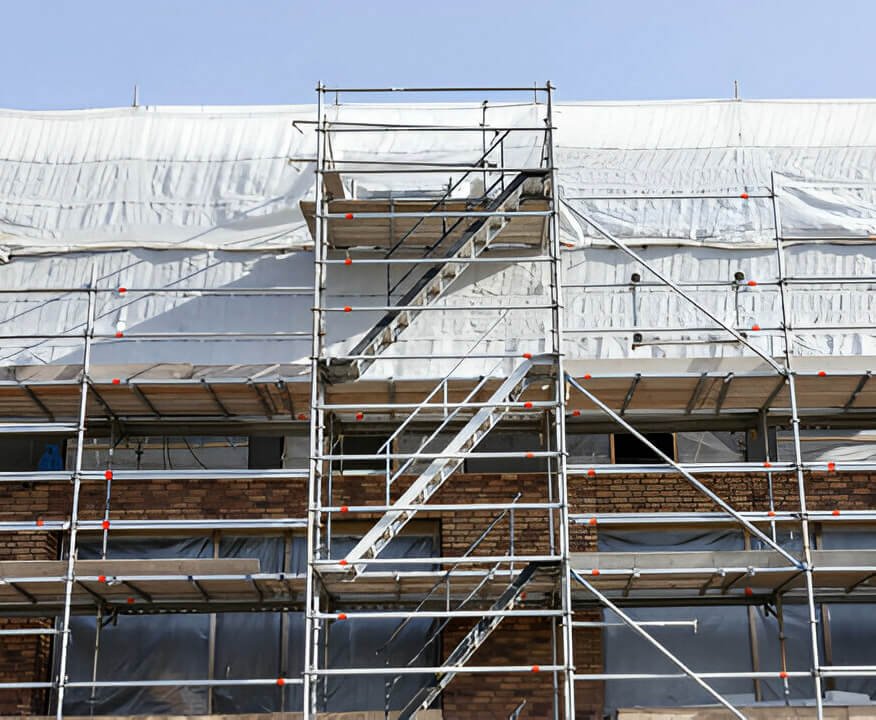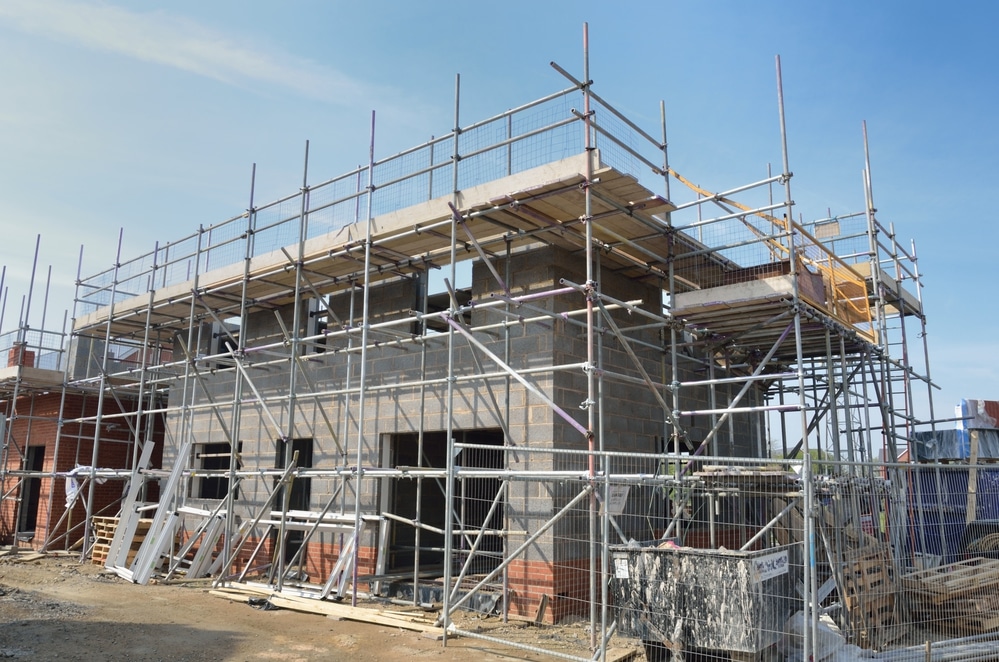Safe and Durable Scaffolding Guildford for Your Upcoming Construction Work
Discovering the Different Kinds Of Scaffolding Used in Building Jobs
The building sector counts heavily on different types of scaffolding to fulfill specific project requirements, each offering unique benefits and applications. Typical frame scaffolding gives a strong structure for general tasks, while suspended scaffolding is necessary for work on high-rise frameworks.

Typical Framework Scaffolding
Standard framework scaffolding is among the most widely utilized approaches in the building industry as a result of its effectiveness and versatility. This system is composed of straight and vertical frames that are assembled to create a steady platform for employees and materials. The primary elements consist of vertical messages, horizontal journals, and diagonal braces, which together offer a strong structure that can support substantial tons.
One of the key advantages of typical structure scaffolding is its adaptability to numerous building and construction tasks, varying from household structures to big commercial frameworks. The modular layout enables simple assembly and disassembly, making it reliable for both temporary and lasting jobs. Furthermore, the system can be tailored in height and width, suiting various building styles and website problems.
Safety is critical in scaffolding applications, and standard frame systems are geared up with guardrails and toe boards to avoid drops and make sure worker protection. Moreover, routine examinations and adherence to safety and security guidelines are critical in preserving the stability of the scaffold. Overall, standard framework scaffolding continues to be a basic selection in the building sector, offering a reputable platform for labor and enhancing total project efficiency

Suspended Scaffolding
Suspended scaffolding offers an unique option for building projects that need access to elevated surfaces, especially in circumstances where conventional frame scaffolding may be unwise. This sort of scaffolding is typically put on hold from the roofing or top levels of a structure, utilizing a system of pulley-blocks, platforms, and ropes to create a working room that can be gotten used to various elevations.
Among the main benefits of suspended scaffolding is its adaptability. It can be quickly repositioned or reduced to suit modifications in construction requirements, making it ideal for jobs such as home window installation, frontage work, and maintenance on skyscraper buildings. Furthermore, the marginal impact of suspended scaffolding enables far better use ground area in metropolitan atmospheres, where area is typically minimal.
Security is a critical consideration in the usage of put on hold scaffolding. Proper rigging and anchoring systems need to be employed to guarantee security and protect against accidents. Operators should likewise be educated in the secure usage of this equipment. In general, put on hold scaffolding gives a reliable and reliable remedy for accessing hard-to-reach areas in various building situations, improving both efficiency and safety and security on website.
System Scaffolding
System scaffolding, usually pertained to as a modern-day remedy in the scaffolding sector, is composed of pre-engineered elements that can be rapidly assembled and adapted for numerous building and construction jobs. Scaffolding. This type of scaffolding is characterized by its modular layout, which enables adaptability and effectiveness on job websites, fitting architectural demands and different elevations
Commonly made from high-strength steel or light weight aluminum, system scaffolding provides enhanced resilience and security. The elements include upright messages, horizontal journals, and diagonal dental braces, which interconnect firmly, making sure a robust structure. The style often includes standardized installations, simplifying setting up and disassembly processes, thereby minimizing labor time and costs.

Rolling Scaffolding
Rolling scaffolding is a versatile alternative to traditional fixed scaffolding, designed for mobility and ease of use on construction websites. This sort of scaffolding contains a system supported by frames with wheels, allowing workers to conveniently transfer it as required. The wheelchair feature dramatically improves efficiency, as it decreases downtime related to dismantling and putting together fixed scaffolding.
Usually built from light-weight materials such as light weight aluminum or steel, rolling scaffolding supplies a durable yet mobile service for jobs needing frequent repositioning - Scaffolding. It is especially beneficial in jobs such as painting, drywall setup, and electric work, where access to various elevations and places is necessary
Safety and security is paramount in rolling scaffolding design, with attributes such as locking wheels to stop unintentional motion when in operation, and guardrails to protect workers from falls. Additionally, many versions are adjustable in height, suiting various job demands.
Cantilever Scaffolding

The layout of cantilever scaffolding usually involves using arms or brackets anchored to a building or structure, allowing the system to extend outward safely. Safety and security is vital; thus, these scaffolds need to be engineered to stand up to ecological conditions and various loads. Normal assessment and maintenance are necessary to guarantee structural stability and employee security.
Cantilever scaffolding is favored for its versatility and reliable usage of space, making it a popular selection in metropolitan environments where room restrictions prevail. Moreover, it promotes much easier access to high elevations, inevitably adding to the total effectiveness of construction tasks. Temporary Roof Scaffolding Similar to all scaffolding types, correct training and adherence to security criteria are vital for employees using cantilever scaffolding.
Verdict
Conventional framework scaffolding gives security, while put on hold scaffolding offers flexibility for elevated tasks. System scaffolding assists in fast assembly, and rolling scaffolding enhances movement for varying work atmospheres.
Standard structure scaffolding gives a tough structure for basic jobs, while put on hold scaffolding is necessary for job on skyscraper frameworks.Rolling scaffolding is a flexible alternative to conventional fixed scaffolding, designed for mobility and ease of usage on building and construction websites. As with all scaffolding types, appropriate training and adherence to safety standards are crucial for workers making use of cantilever scaffolding.
Typical framework scaffolding supplies stability, while suspended scaffolding supplies convenience for raised tasks. System scaffolding facilitates fast setting up, and rolling scaffolding enhances mobility for differing work settings.